Benji and I have only met once.
But in 4 months, we’ve taken a brand new domain and blank WordPress install, and managed to do the following.
Get over 16,000 unique visitors in the last 30 days

Got kudos on content from the likes of Sean Ellis…
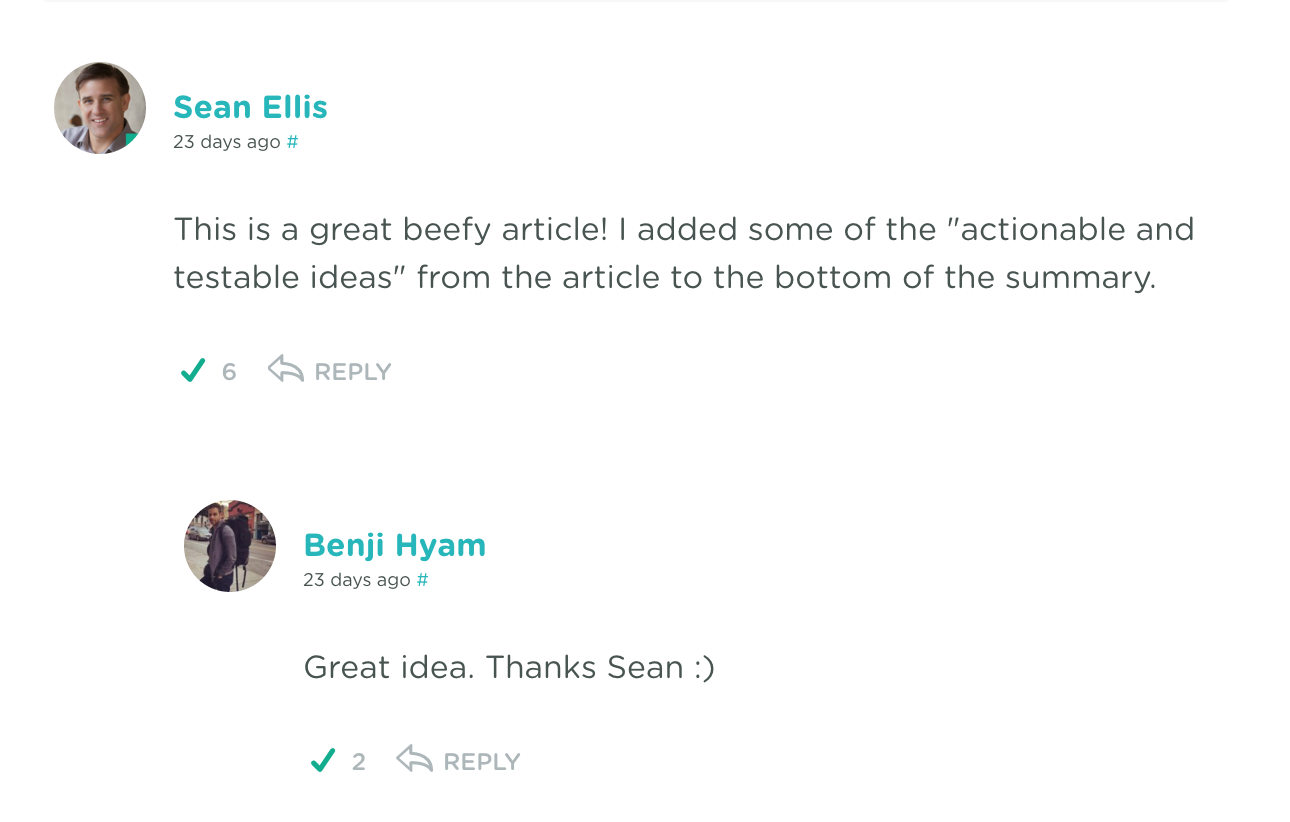
Rand Fishkin…
Has marketing become the toughest position to hire? https://t.co/3rHPd8w1Qs makes some compelling points.
— Rand Fishkin (@randfish) April 4, 2016
…and Noah Kagan:

We’ve converted 1,700 users into email subscribers, which includes marketers from companies like Campaign Monitor, Cisco, Salesforce Desk, Paypal and hundreds of other startups and small businesses.

And did this while I continue to run a conversion optimization agency full time and Benji boxes kangaroos on the other side of the world:

We’ve done this by trying our best to be efficient. We don’t always succeed, but we try to make sure we have the basics in place:
- Stay focused on one goal
- Don’t waste money on non-essential expenses
- Save time — ruthlessly
This post is about the technology that helps us with those 3 processes, especially the third: save time.
In a growing business, cash and time are your most precious resources. (Don’t tell me that’s true for all companies. Cash is not a precious resource for huge businesses. In fact they often don’t know what to do with it.)
And for small businesses although cash is scarce, time may be arguably more precious because by definition it doesn’t increase. Eventually, as revenues (and profits) grow, you start getting extra cash, so it becomes less and less restrictive.
But time stays fixed.
So growing this site on a part-time schedule has been an exercise in time management. And the technology we use has played a crucial part of in it.
As much as I want to focus every single blog post on super in depth case studies, and keep the focus away from us…
…people have asked us over and over again about the different pieces of technology that we use:
- Why did you choose that optin service?
- Are you using any software to manage content?
- Where did you get your theme?
- And maybe 30 more similar quesitons…
So I’m finally caving on my resistance to writing about software platforms, and in this post I’m going to outline all the key pieces of tech we’ve used to do 2 things:
- Communicate + execute
- Run the site
In all cases I’m going to be ruthlessly honest about what has saved us time and what hasn’t.
So let me be clear: This is not just a sales pitch for every service we use. We don’t pretend our processes are perfect in this article. Below, we are brutally honest about what we like, don’t like, and where we disagree with each other.
And finally, I’m going to reveal a piece of software we’ve been quietly building that’s helped us save over 10 hours a week in time spent formatting posts and dealing with WordPress minutiae.
Tools We Use To Communicate and Execute
Slack
The #1 way we communicate on a day to day basis is Slack. It’s our instant messenger. And to be honest, I have mixed feelings about instant messaging.
And by “mixed feelings” I mean, I mostly don’t like it.
Because a never ending stream of small messages kills productivity. You end up spending a huge part of your day just chatting. And unless you’re an executive that produces no “work product” of their own, chatting is not enough to accomplish things worth remarking about.
Yes, this is supposed to replace email, which is another productivity killer, but in my book it’s just a one for one replacement: you end up wasting the day away on instant messages instead of email.
I’m not alone, these feelings are shared by Samuel Hulick in this viral Medium post:
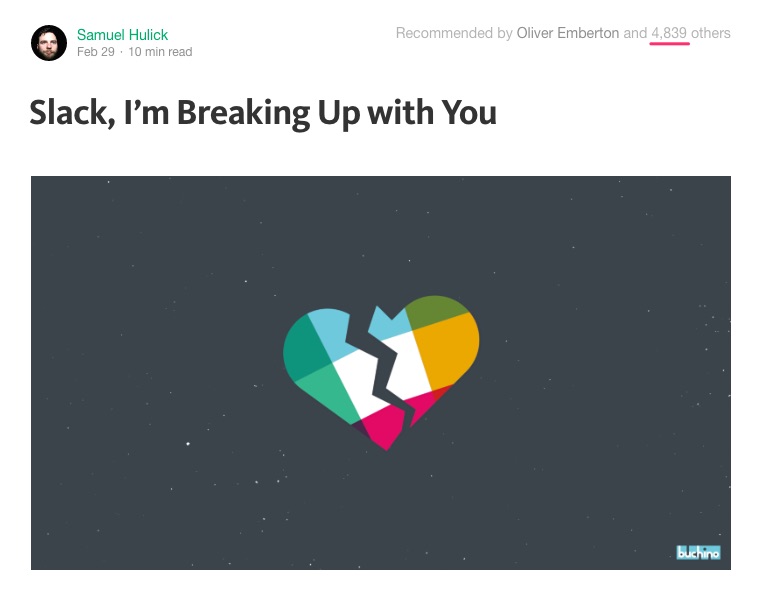
That said, as an instant messaging tool, it’s pretty good. Mostly because search is good.

But to be fair, search in Gmail is pretty damn good too.
Now, where Slack shines is in group communication. You can read a million other posts on using slack as a company, but that’s not what I’m talking about here. What I’m referring to is Slack groups. Marketing groups where we can network with other marketers have been wonderful for getting guest posts, getting advice on posts, getting help promoting posts, and just to bounce ideas around.
Yes, you can get those benefits from other communities like Facebook groups and forums, but something about Slack being it’s own app, where you don’t have to get distracted by your Facebook timeline, you get channels on topics, and can easily have 2, 3, 4+ person sidebar conversations is nice.
This brings me to Trello…
Trello – A Content Pipe(line) Dream that Isn’t Taking Hold
I want to cry just writing this section, because the idea of Trello for managing a content marketing operation is amazing.
In fact, my entire CRO agency runs on Trello. We very, very rarely send each other emails — or use instant messaging. I’d say (no exaggeration) that 95% of our communication is on Trello.
Here’s why it’s perfect for a running a blog: it’s structure is setup like a content calendar. You have lists that can be used for article status (e.g. Queue, Drafting, Implementing, Promoting, Done) and cards that can be used for posts.

As you draft, implement, and promote posts you drag the card from one place to another:

But we barely use it. It’s never current. For example a look at the first card in “On Deck”. It’s for Danavir Sarria’s guest post on headlines. That was published and promoted weeks ago. But it’s sitting in the “On Deck” list.
This frustrates me to no end. I’m getting worked up just typing this.
The result is that we do a lot of things on an ad hoc basis. Promotion happens ad hoc. We write posts ad hoc.
And we communicate with each other about that via Slack. So discussion about one post is in the same slack conversation as discussion about another post. That’s disorganized.
We’re getting away with it because we are just two people (not a lot of coordination needed) and we’re exclusively focused on the blog right now. Up until now, we haven’t had a product and haven’t hired freelance writers.
Pretty soon this will have to change.
For Trello to work, everyone needs to be bought in, and Benji is not bought in, but I’m working on it.
Skype and Facetime: Saving calls for once a week strategy sessions
Note: This section may be controversial so feel free to give your two cents in the comments below.
It’s not insightful to tell you we use Skype and Facetime to talk, but what I do think is useful is why and how often we talk.
We reserve phone conversations for high level strategy, once a week.
I’ve found this really useful: using live conversation for high level strategy, and leaving the day to day minutiae for asynchronous communication.
In fact, this is one of my favorite parts about not working in an office and having a virtual team.
I’m a huge fan of the book and concept of deep work (by Cal Newport) and its core concept of spending large stretches of time not communicating with anyone but just focusing on doing creative work.
An office setting makes that difficult.
Because it’s so easy to communicate with people, every tiny question you run into when working, you quickly interrupt someone else who could be deep in the creative process and ask them about it.
I despise that.
And avoiding that is one of the most glorious parts about working virtually for me.
Now Slack (or Skype, or Gchat) can turn into a version of this annoying virtual shoulder tap. But the solution is to just turn it off. I do that all the time. Here I am doing it to write this very post:
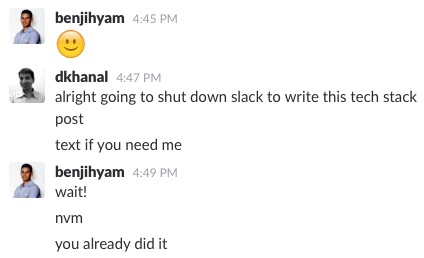
It works (despite Benji’s frickin’ false alarm above). I can focus for long stretches.
So save yourself the trouble of getting shoulder tapped every five minutes, focus on writing content that actually stands out (and is not just long for the sake of being long)
@randfish What do you consider really, really long content? We’ve been writing 2,000 word posts and those seem to do well.
— Benji Hyam (@benjihyam) March 30, 2016
…and create a process for content promotion that works.
Saving your conversations for high level strategy lets you batch your questions and discuss big strategic issues. Recently Benji and I talked for 2 hours and brainstormed our next mega project. Not all calls will be strategic breakthroughs, but you can at least plan out the coming week and make sure everyone is aligned.
In general I find these to be far more useful than daily or worse, ad-hoc, conversations.
My Content Team Communication Tech Recommendations
- Track individual posts through their lifecycle in an app like Trello – I promise I have no affiliation with Trello, I just love it. I see no sense in wasting time sifting through email or a slack thread to organize thoughts and ideas on a post. Use an app like this, so many are free and so so worth it.
- Discuss content strategy once a week with a couple key people. Brainstorm big ideas and plan the week.
- Use instant messaging with caution and don’t set the expectation that people have to respond immediately.
Our Tech Stack to Run Our Site
In this section we’re going to answer questions about various little software pieces to actually run the site itself. As we get more reader questions about tech we are using, we’ll add them here.
What’s your WordPress theme?
Before I mention our theme, can we stop and appreciate the fact that as of late 2015, one in four websites on the internet is powered by WordPress?
That is unbelievable.
No one has asked us about other content management platforms, and that’s why:
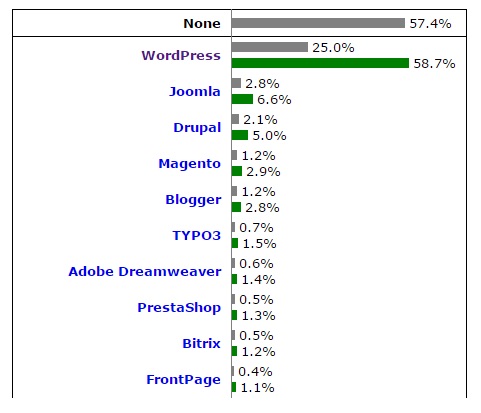
People have asked us about our theme. It’s called Literatum, and it’s made by a designer that goes by Kohette.
I want to answer a few questions we’ve had about our site design in general and relate them to principles companies should be mindful when setting up their blog:
Does design matter?
Yes. I know it’s the cool lean startup thing to say:
“Design doesn’t matter! Just execute! Just create good content!”
The data says otherwise. This study shows that visual design is more important than usability in users’ first impressions of a site. And first impressions can affect user satisfaction with a brand for years afterwards.
On the extreme end there are case studies of conversion rate increases when a company takes a horribly dated design and totally overhauls it. It’s even true of pricing pages where the price and core features didn’t change.
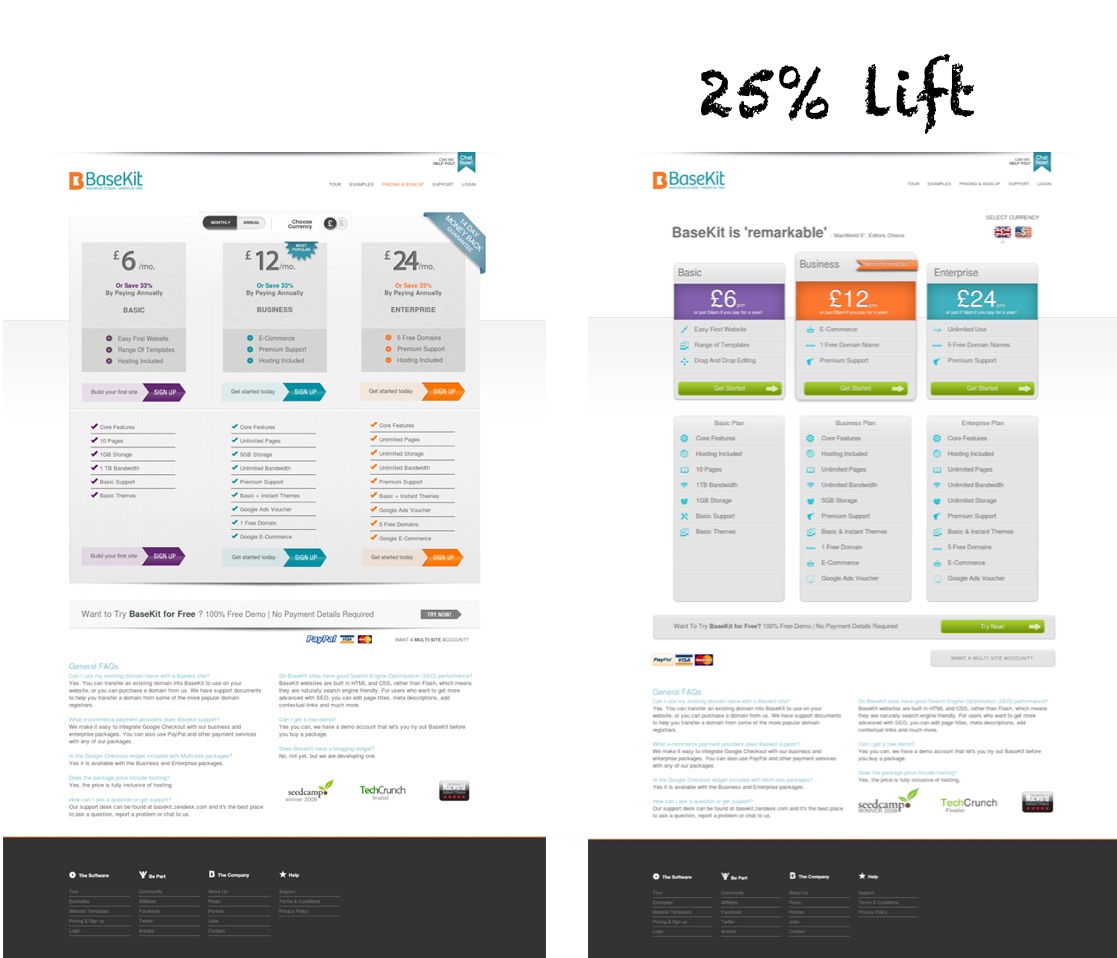
This doesn’t necessarily means you need to spend all kinds of precious cash on every design decision. For example we made our logo with Hipster Logo Generator for free — and it looks as good as a hipster in flannel righting a fixie:
Why don’t you use a sidebar?
We want people to focus on our content to increase time on page and likelihood of linking, sharing, or commenting.
In addition I’ve run multiple A/B tests on blogs with a sidebar and in one case we saw evidence that removing the sidebar increased clicks on content upgrade links, and in another unpublished case I even added a sticky sidebar element that promoted the content upgrade and that showed no statistical difference on blog conversion rate (in fact the variation was losing slightly to the original the entire time).
Also people don’t click on sidebar forms that often. So if you want to convert blog readers into email subscribers or direct sales leads, use content upgrades and a popup (more on this later).
Should I invest in a theme?
If you’re a company starting a new blog, you should do more than that. You need to make the blog look like an extension of your normal site. Invest the development resources to get that done. Don’t just throw up some WordPress theme that’s close and call it a day.
Here’s why…
When blog visitors click over to your main site to explore your app, service or store, make sure the visual design “scent” carries through — that is, it looks like they’re on the same site. The link in the previous sentence shows that this helps conversion rates from PPC to landing page, so it likely applies between your blog and your marketing site as well.
Hosting: Bluehost – We think it’s causing problems
We got this worrying email at midnight on a Friday in February:

We checked and the site seemed to load for us. A weird glitch, maybe? We asked Kevin to check again, and:

What. Is. Happening?!
We’re not entirely sure what is happening here, but we have a solid theory. Benji had trouble loading his personal site — also hosted by Bluehost — in San Francisco on a Comcast connection. He was told Comcast is blocking his site, so he had to move it to another hosting provider, and it worked.
We think something similar is happening here. We haven’t switched yet, but when you’re trying to bust your ass to grow a site from scratch, this is literally the last thing you want to deal with.
Email Service Provider: Mailchimp
Ah the email list…now we’re getting close to my heart.
Because of my background in CRO, the concept of building an email list was in our DNA from Day 1. Although we publicized our traffic goal the most, traffic is really just the first step on the way to email subscribers. (The reason is because we’re building a business backwards and the audience is coming before products…but that’s a discussion for another day.)
We use Mailchimp as our service provider.
It’s easy, not too expensive, it’s popular so every optin form service under the sun integrates with it, and (the most important reason) I have the most experience with it.
We’re not doing anything fancy with Mailchimp.
Mailchimp’s autoresponders let us send a welcome email to every subscriber and in turn start a ton of discussions that help us understand our audience (critical):
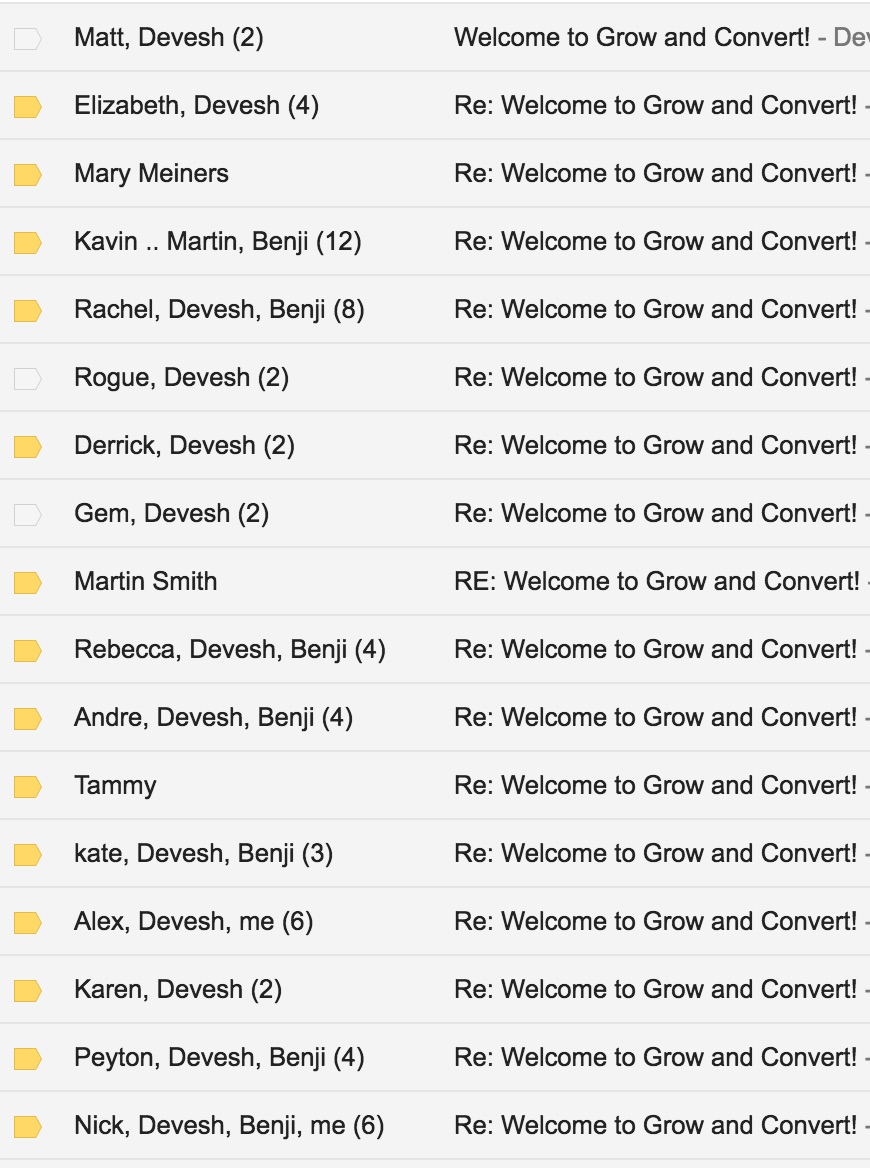
But one thing that’s not easy in Mailchimp (but possible) is delivering unique lead magnets to people who optin for different content upgrades, after double optin confirmation, and making sure they end up on the same list (so you’re not dealing with a giant mess of 50 different lists).
You can pull this off in Mailchimp by creating a list field for every unique content upgrade:
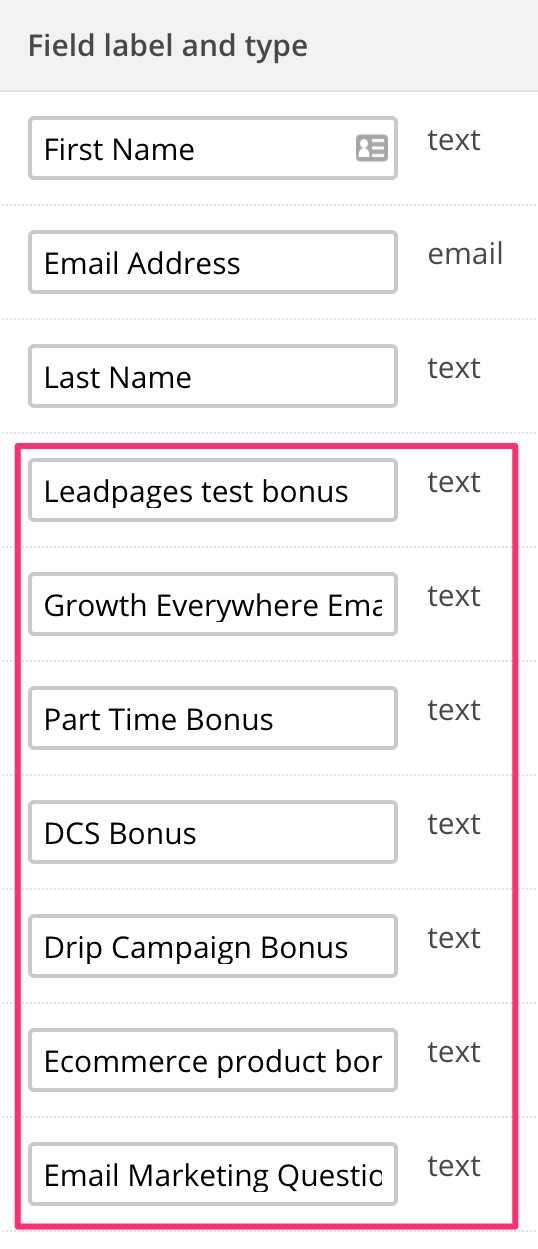
Making sure your optin form populates that list field with some value to indicate they opted in for that bonus (e.g. I use “yes”).
And triggering autoresponders when that list field value changes:
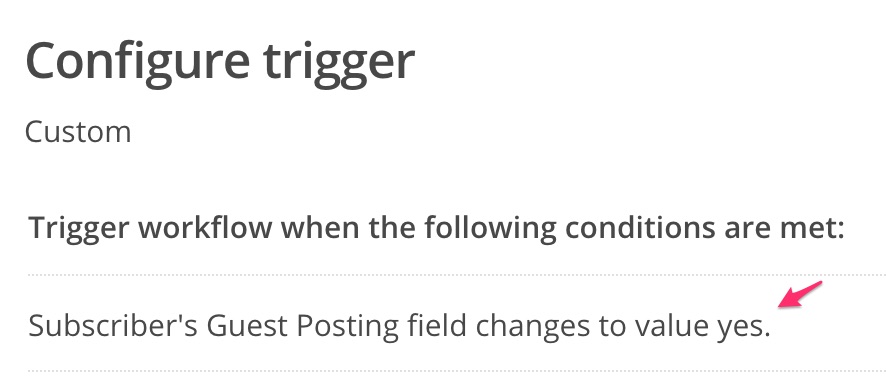
But to be blunt: it’s kind of a pain in the ass.
So, on Grow and Convert, we’ve actually been using single optin for content upgrades. This is made easy by our popup service, OptinMonster, who happens to have a one click checkbox for disabling double optin.
Single optin is supposed to be dangerous for email lists as people can put in a fake email or someone else’s email, hurting your open and click rates. But we’ve seen pretty steady open and click rates despite our list growing exponentially in the past few months.

Eventually, when we start implementing more complex email funnels, we’ll likely move to a fancier email service provider that can handle tags, different drip sequences, and such more easily.
But that time is not now. What’s more important to us right now is just building the list.
To date we’ve spent $89 on Mailchimp (over 4.5 months).
Speaking of building the list…
OptinMonster: Building the email list
This is one of the most asked about questions we’ve received: why did we choose Optinmonster?
The question is also very often followed up with “vs. using Sumome?”
We know the founders behind both companies, so we’re not going to give you what you may want and pick a side and start campaigning for one tool vs. the other.
What I’ve found doing conversion optimization, including on content, time and time again is that your conversion rate is more of a function of the quality of your content rather than the details of your optin software. Yes where you position CTAs and other details matter. But by and large you need substantive content for people to give you their email address. For example, I’ve tried putting content upgrades on blog posts that just weren’t that meaty, and they barely converted.
Nonetheless, why did we choose Optinmonster?
Two reasons:
- It’s cheaper: $4/month instead of $40/month. (Hey, we’re a resources restrained small business, remember.)
- We like their out of the box designs better. (More resource savings as we don’t need a designer)
It also has the “skip double optin” feature which makes content upgrades extremely easy to implement:
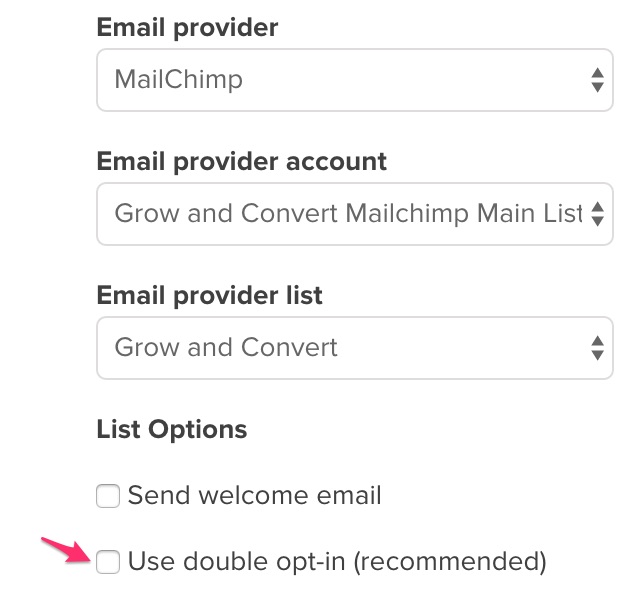
Call out boxes: Shortcodes Ultimate
Finally on the topic of optins, we’ve been asked how we create these neat little call out boxes where we promote content upgrades as well as name little side notes:
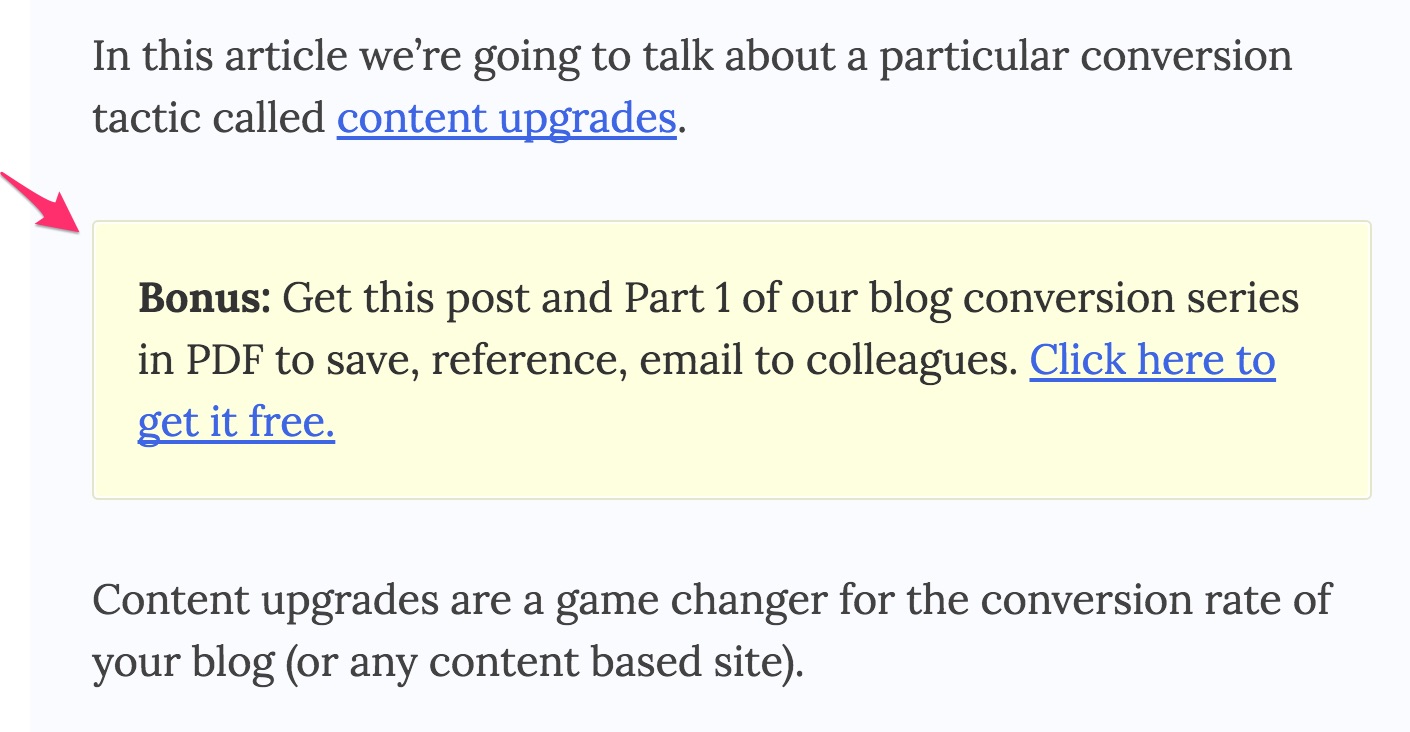
We use a plugin called Shortcodes Ultimate. It’s free, stable, and works wonders.
Design – Unsplash
As I mentioned in the theme section, design matters.
And other than some screenshots of the subject matter, almost all photos in the header of every article is from Unsplash.
This is a massive time saver. As we explain in our secret weapon section below, the last thing you want to spend time on after creating content is formatting it and choosing photos. But you do want your design to look amazing to build trust and credibility.
Unsplash doesn’t have the breadth of selection that paid services like Istockphoto, Shutterstock, and a million other competitors have, but their photos are high quality and not cheesy.
Can you imagine if you put nonsense like this at the top of our blog posts:

“Give a thumbs up if you like to convey trust and a premium brand with stock photos!”
(Ps. Why do four of them look like models and the guy on the left looks like a 12 year old that was added in last minute?)
We pay $0 to unsplash, and honestly the lack of choice makes it somehow more efficient and time saving to find photos.
Thanks Unsplash.
Our Total Monthly Software Spend
So here’s the monthly spend.
Communication
- Slack: Free
- Skype: Free
- Trello: Free
The Site (monthly expenses)
- Mailchimp: $14.83/m (6 month average, currently $25/month at our list size)
- Hosting: $3.95/m
- Optinmonster: $4.08 ($49/yr)
One time expenses
- Literatum theme: $44
- Logo: Free
- Development: $130 (Little one off customizations to our theme using contract developers, like the Join Us button on the homepage)
So if we amortize the one-off expenses over 6 months, we’ve spent $51.86/month for 6 months.
Our Secret Weapon and First Product: Postable
Finally, we are pumped to introduce our secret weapon in saving time. It’s helped us save hours and hours every week not doing the unessential like formatting blog posts so we can do the essential: write stand out content and promote it.
Here’s the story…
A few months ago we published an epic guest post on getting traffic from Slideshare. Eugene Cheng and his colleagues wrote it in Google Docs and sent it to us perfectly formatted — even headers were indicated neatly with Heading 2, Heading 3, etc.:
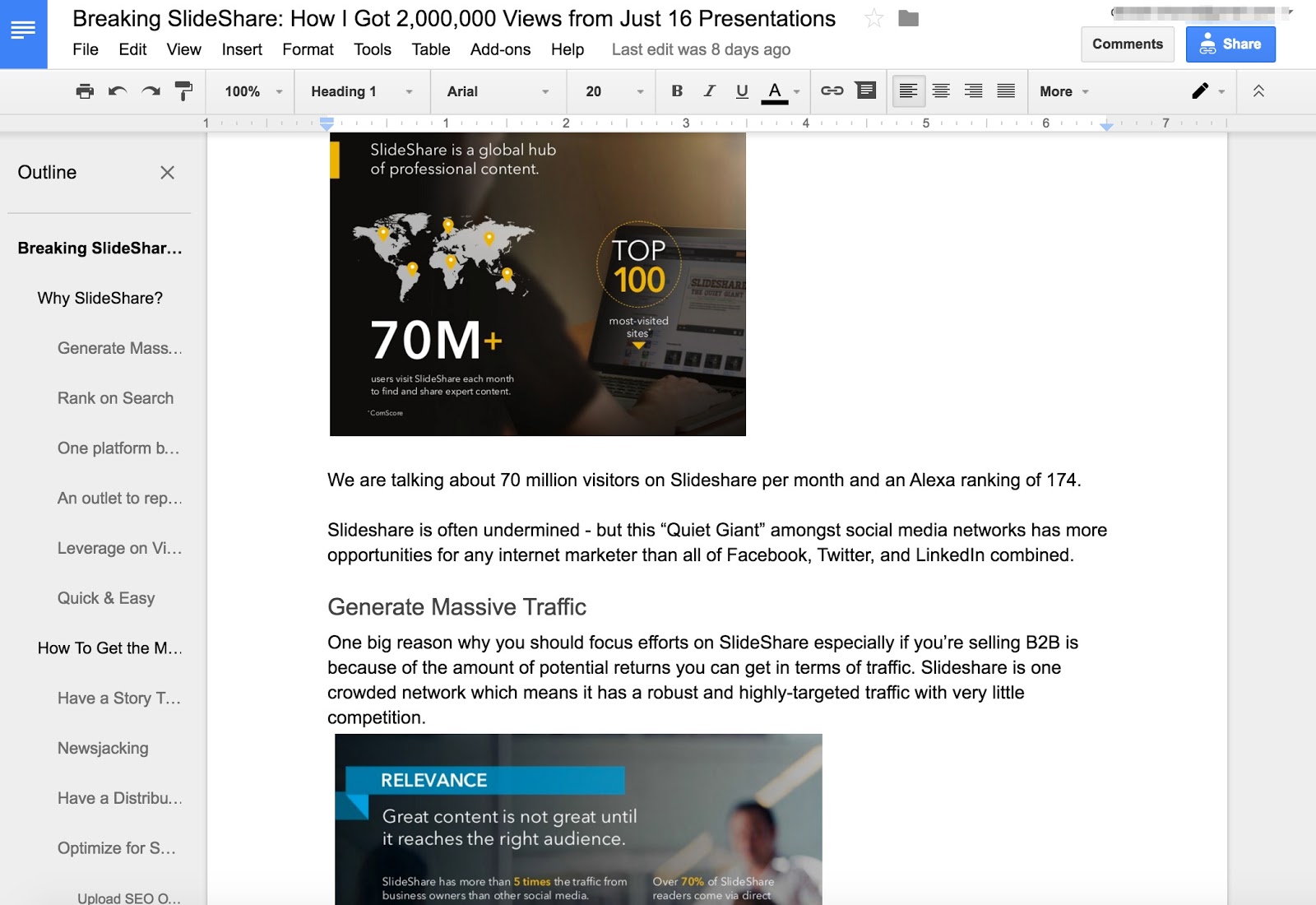
Here’s the problem: Even though the post was 100% done and perfectly formatted, it took Benji over 6 hours to transfer it to WordPress and make sure everything looked right inside WordPress.
He had to download every image individually through a chrome extension and then reupload them into wordpress. Then bring over all of the text, links and make sure the headings were formatted properly.
Let me repeat: Six. Hours. For one post.
That’s insane.
He could have used that time to write a rough draft of an entire other post.
We’ve complained about not having enough time over and over again on this site, so losing that much time to formatting is a big deal.
So we got to thinking:
What if you could push one button and a post from Google Docs would arrive in WordPress perfectly formatted?
It’d be like a dream come true:
- Images would show up in the post and in the media library (extracting images from Google Docs is a huge pain right now)
- Headers would translate over perfectly
- Links carry over seamlessly
- You could even use shortcodes in your Google Doc and they’d just work when you got to WordPress.
Well, we built that tool.
It’s called Postable and it does all of those things:
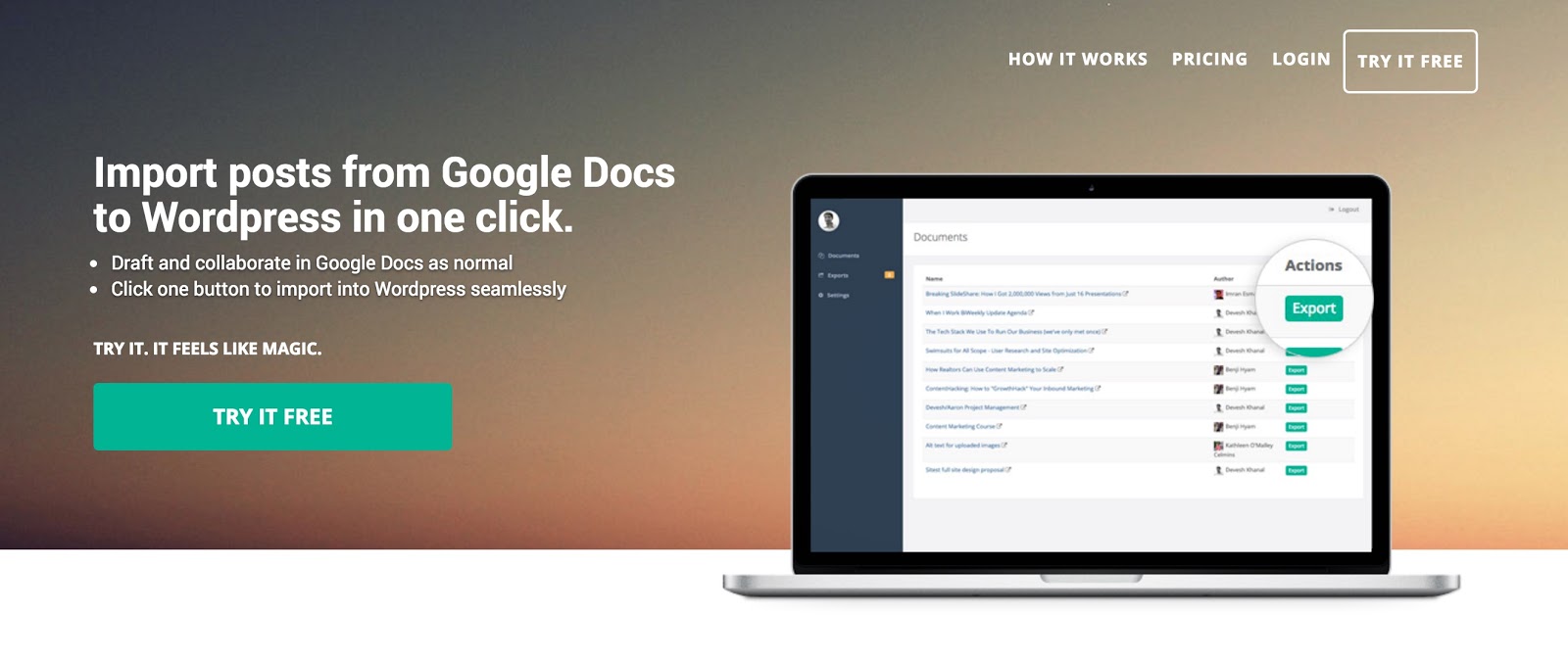
We partnered up with two-time YC alum, GitHub Product Manager, and founder of multiple software startups, Matt Colyer, to build it and we’ve been using it for the past month to publish our last several posts, including this one.
Here’s how it’s saving us a ton of time:
Step 1: We (or a guest contributor) write an entire post in Google Docs. We comment on it, track changes, and take advantage of all the easy-to-use and easy-to-collaborate features of Google Docs.
Step 2: Then when the post is 100% finished, we hop into Postable and click one button (“Export”), sit back, calmly take a sip of our green tea, and head over to our WordPress dashboard where the post is waiting for us.
Step 3: There we can hit preview, add alt text to images, add our SEO title and description, and make any last adjustments we want.
It turns hours of transferring and formatting into a few minutes.
We’re not announcing it anywhere else except this post right now, so if you’d like to take it for a spin, you can check it out here and get 2 free exports to test it out on your next 2 posts.
Benefit for Content Marketing Teams inside Companies
If a company blog consists of mostly freelance blog writers, then formatting posts can take anywhere from 2-8 hours a week of someone’s time alone. That’s not even counting the time to send out e-mails, promote, communicate with writers, etc.
Benji is particularly excited about Postable because he’s run content marketing for several companies and knows how much of a pain it is, and how much time it takes to bring posts into WordPress.
So when you take the pain of formatting and importing your own posts, and multiply that by the pain of formatting guest posts, you realize that an app that turns hours into minutes is a game changer for content marketing.
It takes away a massive headache and time wasted.
Plus having it work with Google Docs means you can accept posts from, and collaborate with, almost anyone.
We’ve priced it so that you’ll get ROI from Postable even if only importing just one post per month.
What’s one hour of your time worth? I bet you it’s higher than the cost of our app. And Postable will save you many hours every month.
Check it out here and let us know what you think about Postable, and what tools you use to run your content marketing operation in the comments.
Want us to write an in depth case study or story like this about you or your company? We’ll also drive traffic to it. Apply here.
Like this article? We produce stories like these for our clients, learn more here.








